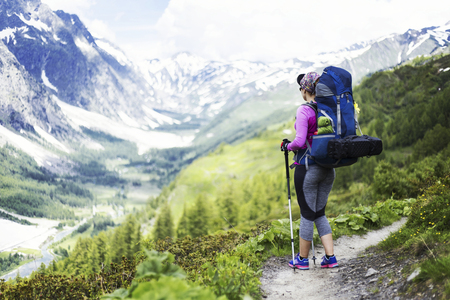Understanding U.S. Hiking Culture
The United States is home to a vibrant and diverse hiking culture that is deeply rooted in both its natural landscape and its social fabric. Hiking in the U.S. isn’t just about enjoying scenic trails—it’s a beloved tradition, a form of recreation, and a way for people to connect with nature, friends, and family. The roots of American hiking can be traced back to the nation’s early exploration and conservation movements. Over time, this outdoor activity has grown from utilitarian treks into a cherished pastime, accessible to people from all walks of life.
Today, the hiking community in the U.S. is shaped by a unique blend of environmental stewardship and individual freedom. American hikers often value the preservation of wild spaces, advocating for public land access while respecting Leave No Trace principles. At the same time, there’s a strong emphasis on inclusivity and adventure—whether you’re strolling urban trails or backpacking through iconic wilderness areas like the Appalachian Trail or Pacific Crest Trail.
Beyond physical health benefits, hiking also holds important social and environmental values. For many Americans, it represents an escape from daily stress, an opportunity to foster community bonds, and a chance to reflect on the country’s relationship with its lands. These values are woven into the heart of U.S. hiking culture, setting the stage for ongoing conversations around land use, preservation efforts, and recreational priorities across the nation.
2. The Land Debate: Public vs. Private Access
The tension between public and private land access has long shaped the hiking culture in the United States. Historically, vast stretches of American wilderness were seen as open frontiers, but as the country developed, land ownership became more complex. Today, millions of acres are designated as public lands—such as national parks, state parks, and national forests—intended for everyone’s enjoyment. However, significant areas remain in private hands, leading to debates about who gets to access these spaces and under what conditions.
Historical Roots of the Land Debate
The roots of this debate trace back to early policies like the Homestead Act of 1862, which encouraged westward expansion by granting land to settlers. Over time, conservation efforts led by figures like John Muir pushed for preservation and the creation of protected public lands. Yet, private property rights have always been a cornerstone of American law, sometimes resulting in restricted access to trails or natural features that pass through or border private estates.
Modern Policies and Their Impact
Modern policies attempt to balance competing interests between landowners and outdoor enthusiasts. For example, the National Trails System Act allows for collaboration between federal agencies and private stakeholders to maintain trail corridors. At the same time, states have enacted their own regulations regarding liability and landowner protections if they allow hikers on their property.
| Land Type | Access Rights | Key Policies/Acts | Common Controversies |
|---|---|---|---|
| National Parks | Open to Public | Organic Act (1916) | Overcrowding, funding issues |
| State Parks | State Residents Priority | Varies by State | Budget constraints, differing access fees |
| Private Lands | Owner Discretion | Easements, liability laws | Trespassing concerns, limited trail continuity |
| Bureau of Land Management (BLM) Lands | Generally Open to Public | Federal Land Policy & Management Act (1976) | User conflicts, resource extraction vs. recreation |
Community Perspectives: Finding Common Ground
The conversation around land use is dynamic and often emotional. Hiking advocacy groups push for increased access and connectivity of trails across both public and private lands. In contrast, some private landowners worry about liability, environmental impact, or disruption to their livelihoods. Initiatives like “Leave No Trace” aim to foster respect among hikers for both natural environments and property boundaries.
Toward Collaborative Solutions
A growing number of communities are embracing creative solutions such as voluntary trail easements or “open gate” days on private properties. These approaches acknowledge legitimate property rights while promoting shared stewardship of America’s natural beauty. Ultimately, understanding diverse perspectives—and working together—is key to navigating these ongoing controversies within U.S. hiking culture.

3. Balancing Recreation and Conservation
One of the most significant challenges in U.S. hiking culture is finding a balance between enjoying nature and preserving it for future generations. As more Americans seek adventure and wellness outdoors, popular hiking destinations are experiencing increased foot traffic, which puts pressure on delicate ecosystems. For example, places like Yosemite National Park in California and the Appalachian Trail stretching across the East Coast have seen record numbers of visitors in recent years. This surge often leads to trail erosion, littering, and disturbances to wildlife habitats.
Park officials and conservationists work tirelessly to mitigate these impacts by implementing measures such as limiting daily visitor numbers, requiring permits for certain trails, and closing sensitive areas during particular seasons. However, these restrictions can sometimes be controversial among hikers who feel their access is being limited. The debate highlights a core tension: while recreation supports physical and mental health, as well as local economies, excessive use can degrade the very environments people come to enjoy.
Education plays a crucial role in bridging this gap. Programs promoting Leave No Trace principles encourage hikers to minimize their impact by staying on marked trails, packing out trash, and respecting wildlife. Community volunteer efforts—like trail maintenance days—also help keep hiking areas sustainable. Ultimately, striking a balance between recreation and conservation requires ongoing dialogue and cooperation among outdoor enthusiasts, land managers, and local communities to ensure that America’s treasured landscapes remain accessible and healthy for everyone.
4. Indigenous Lands and Cultural Sensitivity
When exploring America’s vast hiking trails, it’s crucial to recognize that many routes cross lands sacred to Indigenous peoples. These areas are not just beautiful landscapes—they hold deep spiritual, historical, and cultural significance for Native communities. Failing to respect these spaces can perpetuate harm and erase important histories.
Respecting Indigenous Rights and Perspectives
Indigenous communities have managed and cared for their ancestral lands for generations, developing a relationship based on respect, stewardship, and sustainability. Hikers should educate themselves about the original stewards of the land they traverse and understand that public access does not always mean unrestricted use. Many tribes request specific etiquette or even limited access in certain areas, especially around burial sites or ceremonial grounds.
Collaborative Stewardship Efforts
Across the U.S., there is a growing movement toward collaborative stewardship—partnerships between tribal nations, government agencies, nonprofits, and recreational groups. These efforts aim to balance outdoor recreation with preservation of sacred sites and ecological integrity. For example, co-management agreements allow tribes to have a say in how hiking areas are maintained and accessed.
| Key Aspects | What Hikers Should Know |
|---|---|
| Land Acknowledgment | Learn which Indigenous nation is connected to the area; acknowledge their history. |
| Sacred Sites | Respect signage and avoid restricted zones; some locations may be off-limits for cultural reasons. |
| Cultural Protocols | Follow guidelines provided by local tribes or visitor centers regarding behavior on trails. |
| Partnerships | Support organizations that work alongside Indigenous communities for trail management. |
Practical Tips for Culturally Sensitive Hiking
- Research Before You Go: Many national parks and state lands provide information about Indigenous history and current tribal involvement. Take time to read up before your visit.
- Avoid Removing Artifacts: Never take stones, pottery shards, or other items as souvenirs. They often have deep meaning or are protected by law.
- Engage Respectfully: If you encounter cultural events or ceremonies, observe from a respectful distance only if invited; do not photograph without permission.
- Support Indigenous-Led Initiatives: Donate to or volunteer with groups focused on restoring Native land rights and stewardship practices.
Cultural sensitivity isn’t just about following rules—it’s about honoring the stories and rights of those who came before us. By embracing this approach, hikers can help foster respectful recreation while protecting the spiritual and ecological legacy of America’s wild places.
5. Trail Etiquette, Safety, and Community Responsibility
Hiking in the U.S. is more than just enjoying beautiful landscapes—its about respecting both nature and fellow outdoor enthusiasts. Practicing proper trail etiquette is essential for maintaining positive experiences for everyone. The Leave No Trace principles form the backbone of responsible hiking: always pack out what you bring in, stay on marked trails to avoid damaging fragile ecosystems, and be mindful of wildlife by observing from a distance and not feeding animals.
Best Practices for Trail Sharing
On busy trails, hikers often encounter mountain bikers, horseback riders, and families. Remember the common courtesy: hikers going uphill have the right of way, step aside for faster groups, and yield to horses. A friendly “hello” or “on your left” goes a long way in keeping interactions positive and safe. If you’re hiking with pets, especially dogs, ensure they are leashed where required and cleaned up after—this keeps trails enjoyable and safe for everyone.
Prioritizing Safety
Your safety starts with preparation. Check trail conditions before heading out, carry enough water and snacks, and let someone know your plans. Weather can change rapidly in many U.S. regions, so pack layers even if the forecast looks sunny. Cell service may be spotty; consider bringing a map or GPS device. It’s also smart to familiarize yourself with local hazards like poison ivy or ticks and know basic first aid.
Supporting Local Initiatives
Many popular hiking areas rely on volunteers and donations to maintain trails and amenities. Supporting these efforts—whether by joining a trail work day, donating to local conservation groups, or simply picking up trash when you see it—helps sustain these natural spaces for future generations. Engaging with local initiatives also builds a sense of community among hikers who share your love for the outdoors.
By following Leave No Trace principles, practicing good trail etiquette, prioritizing safety, and supporting local stewardship efforts, every hiker becomes part of a broader movement that balances recreation with preservation. Together, we help ensure America’s hiking trails remain welcoming havens for all who seek adventure or solace in nature.
6. Current Issues and the Future of Hiking Access
As hiking continues to gain popularity across the United States, new controversies and legal challenges are shaping the conversation around access, conservation, and recreation. In recent years, disputes over trail closures, private property boundaries, and increased foot traffic have brought these issues to the forefront of public debate.
Recent Controversies Shaping Trail Access
One of the most notable controversies involves the closure of popular trails due to overuse or environmental degradation. Iconic destinations like Angels Landing in Zion National Park and sections of the Pacific Crest Trail have implemented permit systems or temporary closures to manage crowds and protect fragile ecosystems. Meanwhile, disputes over easements through private land—such as those highlighted by the ongoing battles around the Appalachian Trail—have underscored the tension between landowner rights and public recreational interests.
Emerging Legal Battles
Legal battles over hiking access are not limited to high-profile national parks. Across states like Colorado, California, and Texas, local governments and advocacy groups are grappling with questions about liability, right-of-way laws, and historic access points. For example, some communities have passed ordinances restricting parking near trailheads or requiring proof of residency for trail use during peak times—a move that has sparked backlash among outdoor enthusiasts seeking equitable access.
The Evolving Role of Government Agencies
Local, state, and federal agencies play an increasingly complex role in balancing preservation with recreation. The U.S. Forest Service and National Park Service are experimenting with reservation systems, visitor education campaigns, and collaborative partnerships with Indigenous tribes to ensure sustainable trail management. At the same time, state parks departments are piloting technology-driven solutions—like real-time trail capacity alerts—to prevent overcrowding while fostering a welcoming environment for all hikers.
Looking Forward: Collaboration and Community Engagement
The future of hiking in America will depend on ongoing collaboration between hikers, landowners, advocacy organizations, and government entities. Building trust through transparent communication, respecting Indigenous stewardship practices, and advocating for inclusive policies will help preserve both natural landscapes and recreational opportunities for generations to come.
Navigating Tomorrow’s Trails Together
As debates continue to unfold in courtrooms and community meetings alike, it’s essential for everyone who loves the outdoors to stay informed and engaged. By working together thoughtfully—balancing conservation with enjoyment—we can ensure that America’s trails remain accessible, safe, and inspiring for all.


